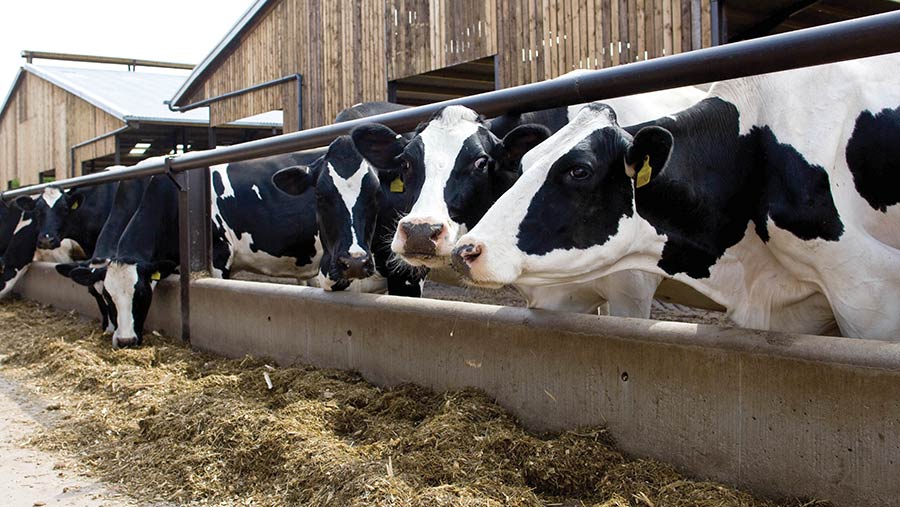Milk price holds announced amid supply increases
 © Tim Scrivener
© Tim Scrivener An increase in milk supply has taken the wind out of the sails for farmgate milk prices, after an initial flurry of price rises by processors at the start of the year.
GB milk supply has moved closer in line with last year’s levels, having fallen behind during the autumn, and production is forecast to grow in the coming months heading towards the spring flush.
From a commodity perspective, UK wholesale prices for cream and butter improved in January, but skimmed milk powder and mild cheddar dropped back.
See also: Milk prices forecast to return to above 40p/litre by summer
With supply on the up and markets appearing to stall, a number of processors have announced milk price holds for February and March.
Arla will stand on at 39.18p/litre for a manufacturing litre, while paying 46.5p/litre to its organic producers in February.
Arthur Fearnall, Arla Foods amba board director, said global commodity markets were stable.
He noted, however, that while global milk supplies continued to slow, EU milk supplies were projected to grow due to expected seasonal increases.
Muller producers will continue to be paid 36.5p/litre for a standard liquid litre in March, while Barber’s Cheesemakers will hold its March price at 38.2p/litre for a standard manufacturing litre.
Organic Herd will increase its milk price by 0.5p/litre in March to 49.5p/litre for its organic producers, after holding at 49p/litre for the past 17 months.
Martyn Anthony, Organic Herd’s chief executive, said the co-operative was cautiously optimistic for the organic dairy sector, and it might be able to deliver further uplifts in its milk price through the spring and early summer.
Other processors were yet to commit to prices when Farmers Weekly went to press on Wednesday 31 January.
Northern Ireland
Meanwhile, dairy farmers in Northern Ireland are seeing their milk prices fall further behind values in other EU countries and elsewhere in the UK.
The Ulster Farmers’ Union (UFU) said the dramatic drop in milk prices and the widening gap really stood out following a meeting in Brussels with other farming unions and co-operatives from across Europe.
UFU vice chairman Cyril Orr said: “Prices are starting to move in the right direction. However, there is no escaping the reality that many of our dairy farmers are still delivering milk below the cost of production.
“This is clearly not sustainable, given the many challenges the industry faces.”
Higher returns for top dairy farms
The top 25% of dairy farms typically make about £120,000/year more profit than the bottom 50%, according to a new report by farm business consultant Andersons.
Its analysis of top-performing dairy farms in the UK found six actions the best-performing enterprises do better than average.
This included keeping a ruthless focus on cost control, calculating and achieving the most efficient stocking rate, concentrating on what you are best at, knowing exactly what the market requires and producing it, knowing what you and the management team wants to achieve, and keeping a very close eye on detail.
Results from the report also found that, after matching similar farm types, the top-performing farms achieved an average milk price 1.7p/litre higher than bottom performers.
The Andersons team said: “It suggests higher performers are keeping milk clean and free from antibiotics more, and producing something more in line with what the processor is wishing to pay for.”
A total of 50 actions to improve performance on dairy farms has been created and can be found in the full Andersons report, which is available on the AHDB website.
